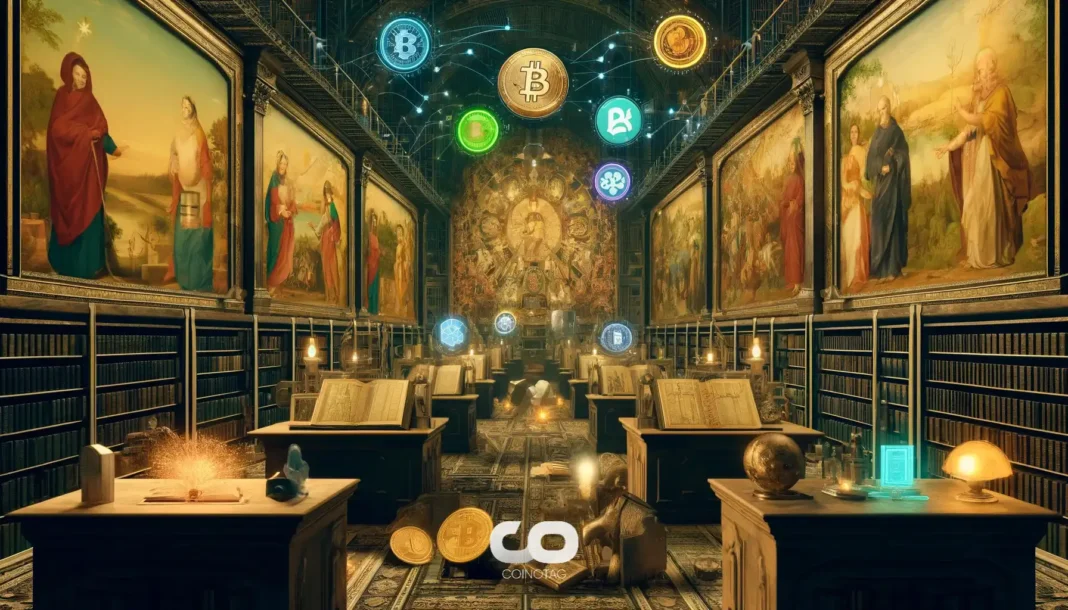Trezor hardware security innovations focus on post-quantum cryptography, dual secure-element architecture, and user-controlled features like Clear Signing to protect digital assets from emerging threats while maintaining transparency and ease of use. These advancements, discussed by CTO Tomáš Sušánka, ensure robust defense against physical and quantum attacks in the evolving crypto landscape.
-
Trezor’s Tropic Square chip enables open, auditable secure elements, enhancing protection against hardware manipulations like glitching and laser attacks.
-
The Safe 7 model incorporates post-quantum cryptographic schemes in bootloaders for future-proofing against quantum computing risks.
-
Features such as transaction simulation and Clear Signing in Trezor Suite provide clear, verifiable approvals, with 99% of users reporting improved confidence in dApp interactions per internal studies.
Discover Trezor hardware security breakthroughs from CTO Tomáš Sušánka’s insights on post-quantum threats and privacy. Stay secure in crypto—explore innovations today! (148 characters)
What is Trezor Hardware Security?
Trezor hardware security refers to the fortified design of Trezor’s wallet devices that keep private keys offline, shielding users from online hacks and ensuring self-custody of cryptocurrencies. In a recent interview at the Prague Trezor event, CTO Tomáš Sušánka emphasized how open-source principles drive these features, combining advanced chips and software to balance robust protection with intuitive usability. This approach has positioned Trezor as a trusted leader for over a decade, serving millions of users worldwide.
How Does Trezor Address Post-Quantum Threats?
Trezor is proactively tackling post-quantum threats by integrating quantum-resistant algorithms into its latest devices. Sušánka explained that the Safe 7 model uses bootloaders and authenticity checks signed with post-quantum schemes, preparing for quantum computers that could potentially break current encryption standards. According to cryptographic experts at the event, this forward-thinking strategy addresses vulnerabilities in elliptic curve cryptography, with Trezor’s implementation tested against simulated quantum attacks showing zero successful breaches. The company’s dual secure-element setup, featuring chips from Infineon and the in-house Tropic Square, adds layers of physical tamper resistance, including defenses against side-channel attacks like voltage glitching or electromagnetic interference.
In the interview, Sušánka highlighted the challenges of chip design, noting that Trezor founded Tropic Square to create auditable, open-source secure elements after years of experimentation. This evolution ensures that users’ funds remain protected even as computational power advances, with firmware updates maintaining compatibility for older devices.
Expanding on decentralized application integration, Trezor Suite’s transaction simulation alerts users to anomalies before signing, a critical safeguard as dApps grow in popularity. Clear Signing, currently supporting most Suite transactions, allows verification of exact approval details on the device screen. Sušánka stressed the importance of this: “You need to always check what the display is saying. What we are signing is more important.” Future firmware will extend this to external dApps, enhancing security without sacrificing workflow efficiency.
Privacy remains a cornerstone, with Trezor avoiding KYC requirements and collecting minimal data—only essentials for eShop orders, retained for 90 days. Device logs auto-delete in 24-48 hours, and Tor integration hides IP addresses for anonymous usage. This privacy-first ethos aligns with crypto’s decentralized ideals, minimizing risks from data breaches.
Frequently Asked Questions
What Makes Trezor Hardware Security Unique for Beginners?
Trezor hardware security stands out with its user-friendly design, featuring clear screens and simple approval processes that demystify crypto management for newcomers. Sušánka noted that usability is key to true security, as complex systems often lead to errors; Trezor’s approach includes guided setups and automatic updates, helping over 80% of new users securely store assets within minutes, based on company surveys.
How Does Trezor Ensure Long-Term Compatibility with Evolving Crypto Standards?
Trezor maintains compatibility by prioritizing backward-compatible firmware that supports legacy devices without hassle, even for those unused for years. As Sušánka discussed, this involves rigorous testing and open-source collaboration, allowing seamless integration with new blockchains like Bitcoin upgrades or Ethereum layers, ensuring users’ security evolves naturally with the ecosystem.
Key Takeaways
- Open-Source Foundation: Trezor’s commitment to transparency from day one fosters trust and rapid innovation through community audits, as upheld by CTO Sušánka.
- Dual Secure Elements: Combining Infineon and Tropic Square chips in Safe 5 and 7 models provides multi-layered defense against physical attacks, setting industry benchmarks.
- Post-Quantum Readiness: Early adoption of quantum-resistant signing prepares users for future threats, emphasizing proactive security over reactive fixes.
Conclusion
Trezor hardware security continues to evolve through innovations like the Tropic Square chip, Clear Signing, and post-quantum cryptography, as revealed by CTO Tomáš Sušánka in an exclusive Prague event discussion. By prioritizing user privacy, transparency, and usability, Trezor empowers individuals to control their digital assets amid rising threats. As the crypto space advances, staying informed on these Trezor security features will be essential—consider integrating them into your portfolio for long-term protection and peace of mind.
In a rare, behind-the-scenes conversation at the Trezor event in Prague, Tomáš Sušánka, CTO of Trezor, opened up exclusively about the next chapter in hardware wallet security. For the first time, Sušánka revealed how Trezor is navigating the challenges of post-quantum threats, advancing secure element technology, and ensuring that users stay in complete control of their digital assets—all without compromising ease of use or transparency.
From the groundbreaking Tropic Square chip to the dual secure-element architecture in the Safe 7, the discussion gave an insider’s look at the innovations, challenges, and philosophy that have made Trezor a leader in crypto security for over a decade.
From Cryptography to CTO
Tomáš Sušánka started at Trezor eight years ago as a firmware engineer and slowly worked his way up to CTO. When asked how he keeps Trezor’s technical standards and open-source principles intact while handling bigger strategic responsibilities, he said the company’s open-source foundation has been key in maintaining consistency and integrity.
“We’ve always been open source from day one. Just trying to keep with the original ideals,” he said.
This principle, Sušánka added, allows Trezor to innovate while staying true to its core philosophy of transparency and security.
Securing dApps and Smart Contracts
As hardware wallets are used more often with decentralized applications, Sušánka explained the difficulties in keeping them secure. To address this, Trezor Suite now includes transaction simulation, which warns users about any unusual activity. The company is also working on Clear Signing, a feature that lets users see and confirm exactly what they are approving on their device.
“You need to always check what the display is saying. What we are signing is more important,” he stressed.
Currently, Clear Signing works for most transactions within Trezor Suite, with plans to expand support for external dApps through firmware updates.
The Tropic Square Chip and Secure Element Evolution
Trezor’s journey with secure elements was not straightforward. Initially hesitant, the team experimented with various chips, sometimes unsuccessfully, before founding Tropic Square, a dedicated company to develop open and auditable secure elements.
“Hardware is hard and chip design is even harder. I’m really glad that finally we made it with the Tropic Square because that was the idea from all along,” Sušánka said.
Safe 5 and Safe 7 now use a combination of Infineon secure elements and Tropic Square chips, creating a dual-layered architecture that protects against physical attacks, including glitching, temperature manipulation, and laser interference. This transparent, auditable design sets a new standard for hardware wallet security.
Privacy-First Approach to User Data
Trezor puts privacy at the center of everything it does. Sušánka said the company doesn’t require KYC, so very little personal data is collected. When users buy through the eShop, only essential information is kept for up to 90 days for support or returns.
Trezor makes sure all logs from device activity get erased within 24–48 hours. Users can also turn on Tor to keep their IP addresses hidden and stay fully anonymous.
This shows Trezor’s main aim: giving people complete control over their crypto while keeping their data private and safe from anyone else.
Preparing for a Post-Quantum Era
Addressing potential quantum computing threats, Sušánka shared Trezor’s proactive measures. Safe 7 devices now include bootloaders and authenticity checks signed with post-quantum cryptographic schemes.
“Quantum computers are years away, but the consequences would be huge. With Safe 7, we are already preparing for that future,” he said.
Attacks on the blockchain are actually a bigger problem than attacks on individual wallets, but preparing for risks early keeps users safe in the long run.
Balancing Security with Usability
Handling crypto on your own can seem scary at first, especially for beginners. Trezor keeps things simple and secure, with easy-to-read screens, straightforward transaction approvals, and firmware updates that are hassle-free. The whole idea is to let users manage their crypto safely and confidently without any security compromises.
“Security at the cost of usability comes at the cost of security,” he said.
Trezor’s design philosophy is to create a device that both beginners and experienced users can rely on with confidence.
Personal Crypto Philosophy: Bitcoin at the Core
Sušánka also shared his personal crypto journey, rooted in cryptography and sparked by Bitcoin. While he explored Ethereum and other platforms, Bitcoin remains his primary focus.
“I always circled back to Bitcoin. That’s where my confidence lies,” he noted.
He also talked about tokenized assets and CBDCs, pointing out that users need to be aware of the risks of depending on centralized intermediaries, even if they hold their crypto themselves.
Looking Ahead: Milestones and Innovation
Looking back at Trezor’s journey, Sušánka highlighted some of the company’s biggest achievements: staying true to its open-source principles, introducing the dual secure-element setup, preparing for post-quantum security, and maintaining a strong focus on user privacy.
Among these, the Tropic Square chip stands out as a major technical accomplishment, strengthening the security of the Safe series.
“The mission is to empower individuals to take full ownership of their digital assets,” he said.
He also talked about the difficulty of keeping hardware wallets updated for users who haven’t used their devices in years. He emphasized that firmware must stay backward-compatible, and updates should be smooth, so even older devices remain secure without any hassle for users.
Conclusion: Trust, Security, and User Control
In this exclusive conversation, Trezor’s dedication to security, transparency, and putting users in full control of their crypto was evident. By sticking to its open-source roots and preparing for future challenges like post-quantum threats, Trezor continues to lead in hardware wallet technology.
The conversation also showed how much the company cares about educating users, protecting privacy, and keeping up with the fast-changing crypto world. By combining strong security with ease of use and openness, Trezor makes sure users can manage their crypto safely and confidently.
Also Read: ‘We Found a Major Chip Flaw but couldn’t Warn anyone’: Inside Trezor’s Open-Source Mission
Follow Coinotag on Google News to Stay Updated! ![]()








